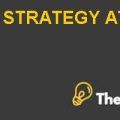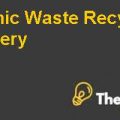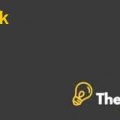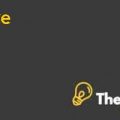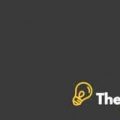
Introduction
The paper attempts to provide a detailed case analysis for Theo Chocolate along with the identification of the problem statement. The paper also critically analyzes the business practices of the company and adheres to the application of SWOT, PESTEL, and Porter’s five forces framework and model. Furthermore, the paper provides recommendation to Theo Chocolate in deciding whether it should continue with their current business model, or shall change their business model for profitability. Lastly, the paper provides various risks and challenges associated with the provided solution.
Problem Statement
After a successful implementation of the current business model combining the three elements which include organic, fair-trade, and bean-to-bar chocolate concept, the company has yet to achieve financial profits. As Vice President of Sales and Marketing, Debra Music is entrusted with the task of making a decision of whether the company shall stick with its current business model, or it shall develop a new business model that could allow the company to attain profitability for a longer run. The company is yet to prove its sustainable business model which has remained unprofitable in the first three years. However, Debra also need to keep in view that the company is expected to earn its first profitability in the fourth quarter of 2009.
Analysis
SWOT Analysis
Strengths
The company developed a strong goodwill amongst its consumer base and its suppliers in providing natural and organic product along with fair-trade business model. The company’s brand strategy of factory tour has also resulted in great brand awareness amongst its consumers where a special tour is provided to consumers to view its business practices and the entire process from raw material to packaging. The products of Theo Chocolate is organic and reflects a symbol of natural product which is preserved in a sustainable packaging. The business practices of the company reflects environmental friendly from the selection of cacao beans from farmers to the marketing of its products. The company also have a strong distributional channel as the company earns the highest percentage of revenues from its distributors.
Weaknesses
The company has a higher cost of production because it highly focuses on environmental friendly business practices and enables to promote green energy. Therefore, the maintenance cost which is required to enable green energy is comparatively higher which makes it higher than its competitors. Moreover, the prices that are offered to consumers are also high which makes it as an expensive product to purchase than its recognized competitor’s products. Although the company has applied many tactics to increase brand awareness, however it has yet to achieve a certain amount of brand awareness that could supersede its competitor’s brand awareness. The company still lacks behind in consumer brand awareness amongst its rivals.
Opportunities
The company has the opportunity to utilize an alternate to using green energy as there have been many technological advancement in the related field. This change can ultimately reduce the price of its products which is offered to consumers. The company also have an opportunity where it can focus on expanding its marketing campaign by developing a precise customer segment. The company can also make innovations in their products according to different festivals of Christmas, New Year, Halloween and many others. Innovative products and limited time offers can increase sales and also create excitement amongst consumers. Furthermore, since the consumer base around the world are becoming inclined towards consuming environmental friendly products, therefore this stance can develop a strong unique selling proposition which shall be strongly highlighted.
Threats
The chocolate industry has low growth patterns and the competition is also increasing due to the entrance of many competitors in the market. Therefore, the company would need to become consistently aware of the new opportunities and make innovation in their products to cope up with the industry patterns. Moreover, in the particular industry the big companies can easily acquire small companies which may allow a shift in their business model. The price of cocoa is very volatile as it could decrease at a very low price or can increase up to its all time high price. The variation can allow changes in the consumer price and the entire revenue model...................................
This is just a sample partial case solution. Please place the order on the website to order your own originally done case solution.
Theo Chocolate, Inc launch small chocolate maker struggle to create brand awareness in the highly competitive segment of branded chocolate gourmets. Theo unique value proposition to be the "only organic, Fair-Trade, bean to bar chocolate factory in the United States," drives the business. The company was started and operates under the assumption that socially responsible business practices are the cornerstone of its operations. Since its creation, Theo has built a loyal and growing following, especially in the Pacific Northwest of the United States. The first three years were spent in the construction of the client base and building brand based on its value proposition and daily work. However, despite the steady improvement of financial performance, to date, Theo was not profitable - the company expected to break "in the black" for the fourth year. The case examines the problems Joe Whinney and Debra Music (founder / director and vice president of sales and marketing, respectively) face as they come out of the first phase of the business enterprise. The key decision facing the company, and Debra, in particular, is that Theo could actually afford to stay true to the strategy and value proposition, which is defined by its existence. He is trying to create a unique brand in the market, which is dominated by large established competitors with significant resources at their disposal. He was not profitable at that. The case provides students with an opportunity to deal with the very real problems that face the idealistic entrepreneurs -. Prejudice to the principles of brand building, cash flow management and planning for the future "Hide
by Michael Cummings Source: Babson College 29 pages. Publication Date: April 1, 2012. Prod. #: BAB692-PDF-ENG




